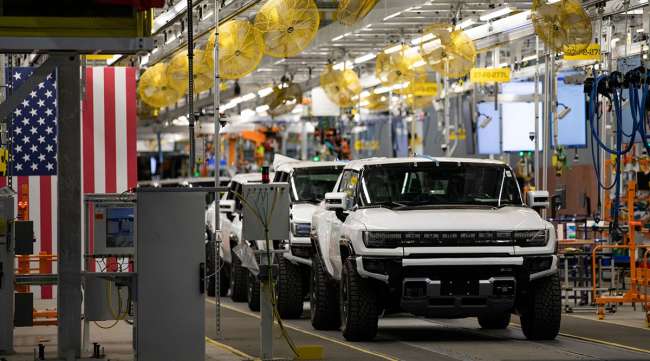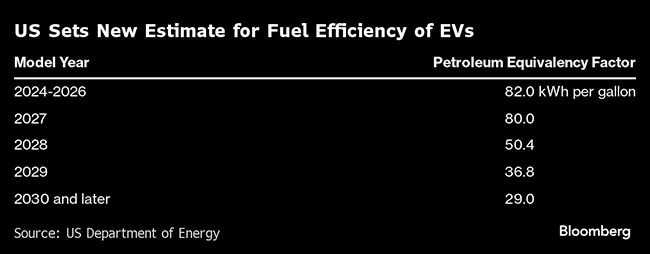Biden Drops Mileage Score for EVs in Bid to Spur Sales

[Stay on top of transportation news: Get TTNews in your inbox.]
The Biden administration is setting a new estimate of the fuel efficiency of electric vehicles that’s meant to better reflect the real world and is likely to further drive sales of emission-free cars.
The so-called petroleum equivalency factor established in a final Energy Department rule being unveiled March 19 responds to concerns from both environmentalists and automakers about the formula used to approximate the effective fuel economy of vehicles that don’t run on gasoline.
The new Energy Department rule will slash the measure from 82 kilowatt-hours per gallon for model years 2024-2026 to 29 kWh/gallon for model years 2030 and later.
The new measure is less restrictive than the 23.2 kWh/gallon the Energy Department initially proposed last year. It also will be phased in over time, starting at 80 kWh/gallon for model year 2027 before falling to 36.8 for model year 2029.
That gradual approach responds to automakers that argued the initial proposal would force them to divert scarce resources away from electric vehicles in order to boost the efficiency of conventional gas-fueled cars instead. Failure to hit U.S. fuel-economy targets exposes carmakers to hefty fines.

The new petroleum equivalency factor is meant to ensure U.S. fuel efficiency rules reflect what’s actually happening on roadways today. Environmentalists complained the previous approach was far too generous, allowing a relatively small percentage of EV sales to easily offset the fuel consumption of conventional gasoline-powered cars. It was last updated more than 20 years ago.
John Bozzella, head of the Alliance for Automotive Innovation, the auto industry’s primary trade group, said it was a “positive” development the adjustments will “phase in over a number of years.”
Meghann Erhart of Relay Payments shares ways to prevent falling prey to fuel card skimming. Tune in above or by going to RoadSigns.ttnews.com.
The new calculation also appeared to satisfy environmentalists who petitioned the government for the change.
“The automakers’ free ride is over,” said Pete Huffman, senior attorney at the Natural Resources Defense Council. “This important update from the Department of Energy will curtail automakers’ use of phantom credits they used to keep selling gas guzzlers. They now need to hit the accelerator on more fuel-efficient vehicles, saving consumers money at the pump.”
The PEF is just one piece of a complex set of U.S. regulations governing the fuel efficiency and pollution from cars and light trucks. Automakers must meet corporate average fuel economy requirements established by the Transportation Department, which are set to be updated later this year.
The EPA, meanwhile, sets tailpipe emission limits on soot, greenhouse gases and other pollution. The agency is expected to finalize new standards for model years 2027 through 2032 on March 20.
The new phased approach will “help incentivize electric vehicles in the early years of the new rule, which of course helps conserve energy,” said Michael Berube, the Energy Department’s deputy assistant secretary for sustainable transportation and fuels.
Want more news? Listen to today's daily briefing below or go here for more info:





